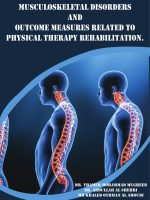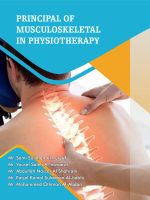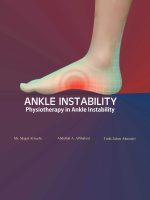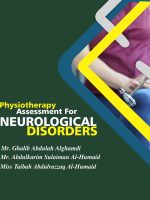THIS book has been written with therapists in mind. It is written for those therapists I worked with and who attended courses that I conducted in the Middle East. But I hope that community workers, volunteers, teachers, programme managers and parents will be able to find ideas and information in the book that will help them to understand the nature of cerebral palsy and how to help children affected by it. During the time that I lived in the Middle East and Africa, huge changes took place in attitudes to the provision of services to children with disabilities. In the seventies, funding agencies were supporting hospital-based programmers and institutional care. At this time considerable amounts of aid money were spent on training physiotherapists (never occupational therapists or speech and language therapists). This approach to rehabilitation (the medical model) was seen to fail when it was realized that so very few children could bene fit from it. Even those few children who learnt to walk with aids and who received education during their time in the institutions could not easily be integrated back into their communities. This failure and a powerful move by organizations of disabled people led to the development of the social model and the switch of donor funding to community-based rehabilitation (CBR) programmes. There is no doubt that CBR and the philosophy behind it have achieved huge benefits for children and their families. The programmes, when they work well, mobilise the whole community so that the child and his or her family become accepted and supported by that community. Ownership and responsibility for the success of the programme is with the people on the ground. This was a very attractive idea for donors and, unfortunately, many of them thought that this would be a cheap way of dealing with a problem that otherwise seemed like a bottomless pit. This short-term view did not take into account the fact that it is not enough that people with disabilities should be accepted by their communities. Expertise must also be made available to them to enable them to be as independent as possible and, especially in the case of children with cerebral palsy (CP), this means good therapy and early intervention. Nowadays this need is recognised—but while the idea of CBR was being promoted and developed, therapists’ training programmes were being starved of support. Very few new training centres were established and those already running were pathetically underfunded. Curricula and training material could not be renewed and morale dropped very low. In all the countries where I lived and worked, therapists were given almost no teaching about paediatrics in their basic training. They had no models of good practice to aspire to and there were almost no continuing education courses at all. The aim of the courses I ran was to start bridging the gap between the good expertise of the West and the learning needs of therapists in developing countries. Western expertise in this field does not have to be high-tech. It depends on good observational and analytical skills to solve problems and good HANDLING and communication skills to treat the child and teach families to do the same. I found the biggest difficulty in bridging this gap was that therapists, doctors and programme managers in developing countries were not easily convinced that such a seemingly simple approach could work. In the Middle East in particular, where many doctors of physical medicine were trained in former Eastern bloc countries and believed in passive treatment modalities such as hot packs and electrotherapy for children with CP, there is still a huge reluctance to consider other approaches. On the other hand, guardians of standards in Western countries responsible for course certification and validation were understandably reluctant to make adaptations to curricula and criteria for participating in their courses. This was because they did not want to be accused of watering down their standards either academically or in the level of skill acquisition. But without changes to entry criteria it is almost impossible for therapists from developing countries to get onto even the first rung of the ladder leading to internationally recognised training and ongoing education. Without adapted to curricula the courses will not prepare therapists in developing countries, either clinically or operationally, to work in their own environments. It is my belief that the need for rigorous training programmes for therapists in developing countries is overwhelming. It is in these countries that the majority of children with CP are found. It is also in these countries that therapists need the best possible training. But they will have to work in a different way to therapists in the West because there will never be enough resources for programmes to employ therapists at a ratio of more than one therapist for every hundred children. To work effectively in these circumstances a therapist can only assess a child, plan a programme and then teach the programme to family members and community workers to carry out. There need be no watering down of standards in courses that prepare therapists to work in this way, just a change of emphasis. The aim of this book is to be a resource for therapists. It will benefit mostly those therap ists who have done a practical course. My hope is that it will give a structure within which those people responsible for children with cerebral palsy can plan an effective and feasible programme for them. This structure will reflect the complexities of the haphazard nature of the damage that cerebral palsy causes to the CENTRAL NERVOUS SYSTEM of a developing child. It also takes into account that many of the people working with these children have not had opportunities to learn how to observe children’s movement and POSTURE, nor to analyse how CP interferes with these. The structure of the book leads the reader through the process of assessing a child, planning a treatment programme and working with the family. The first chapter gives some theoretical background covering the development of normal movement, the way CP interferes with this and what possibilities there are to help the child overcome this interference. The second chapter is devoted entirely to observing, handling and finding out about a child in a holistic way. It encourages the reader to take note of every detail of the child’s behaviour and per formance. Not until the third chapter is the reader encouraged to analyse what it is that he has seen and taken note of. My idea was to break down into two separate operations the process of observation and that of analysis. The fourth chapter looks at the recognition of present or threatening contractures and deformities and some ideas on prevention. In the fifth chapter I have tried to condense, into what is really much too small a space, the principles of treatment of the different kinds of CP. I know from my teaching that most people learn about principles from being given practical examples of how each principle can be applied. The danger with putting these examples in a book is that readers may think the examples are rigid treatment plans. This couldn’t be further from the truth. I ask readers to use the examples only as illustrations of one way in which the particular principle being explained may be applied. The sixth chapter deals with working with families, and the seventh with the equipment that can be useful both in therapy centres and for families to have at home. The eighth chapter in this second edition is written by an occupational therapist, Annie Brozaitis. She is Bobath-trained but has also completed courses in sensory integration and has amalgamated these two approaches in her practice. She brings a new way of looking at the problems that altered sensory processing brings to a significant number of children with cerebral palsy, and imaginative ideas for helping them. Unfortunately, in most developing countries there are very, very few speech and language therapists and a huge need for their expertise to be made available. That is why the eighth chapter, by Marian Browne, is devoted entirely to ways of helping children with CP with eating and drinking. So many children with CP in developing countries suffer desperately from not being able to take food into their mouths, manipulate it and swallow without choking that, for many mothers, nourishing their children is their overriding concern. Marian Browne is a speech and language therapist and a Bobath tutor. She worked for several years at the Bobath Centre in London. In my own practice I have always used the Bobath or Neuro-Developmental Therapy (NDT) Approach. My aim is to demonstrate the benefits and effectiveness of the Approach and to teach the underlying skills of problem-solving and handling that lay the foundation for therapists to participate later in fully-accredited Bobath/NDT courses. Much of what I have written on the features of different kinds of CP and the principles of treatment come from the eight-week Bobath course. But this book cannot be considered as an official exponent of the Bobath Approach. It is only a reflection of the way in which I myself have interpreted the Approach and used it in the countries where I have worked. I would like to state here my indebtedness to the Bobath tutors who have helped and encouraged me over many years and to apologise to them if I have misrepresented the Bobath Concept in any way. Throughout this book I have used ‘he’ and ‘she’ alternately when referring to children. The same is true of therapists. I hope that readers will be able to understand, from the con text, which I intend.
save
₹ 5.00Kids With Cerebral Palsy
₹ 225.00₹ 230.00
| Author Name | Abdulrahman Ahmad Alblowi, Ibrahim Abdul Rahman Al-Humaidan |
|---|---|
| Book Format | e-Book |
| Categories | PHYSIOTHERAPIST |
| ISBN | 978-81-971073-9-9 |
| Language | English |
| Pages | 259 |
| Published Date | 24 May 2024 |
| Publisher | Horizon Books |
| Size | B5 |
| Author Name | Abdulrahman Ahmad Alblowi, Ibrahim Abdul Rahman Al-Humaidan |
|---|---|
| Book Format | e-Book |
| Categories | PHYSIOTHERAPIST |
| ISBN | |
| Language | English |
| Pages | 259 |
| Published Date | 24 May 2024 |
| Publisher | |
| Size | B5 |
Customer Reviews
There are no reviews yet.
General Inquiries
There are no inquiries yet.










Be the first to review “Kids With Cerebral Palsy”
You must be logged in to post a review.